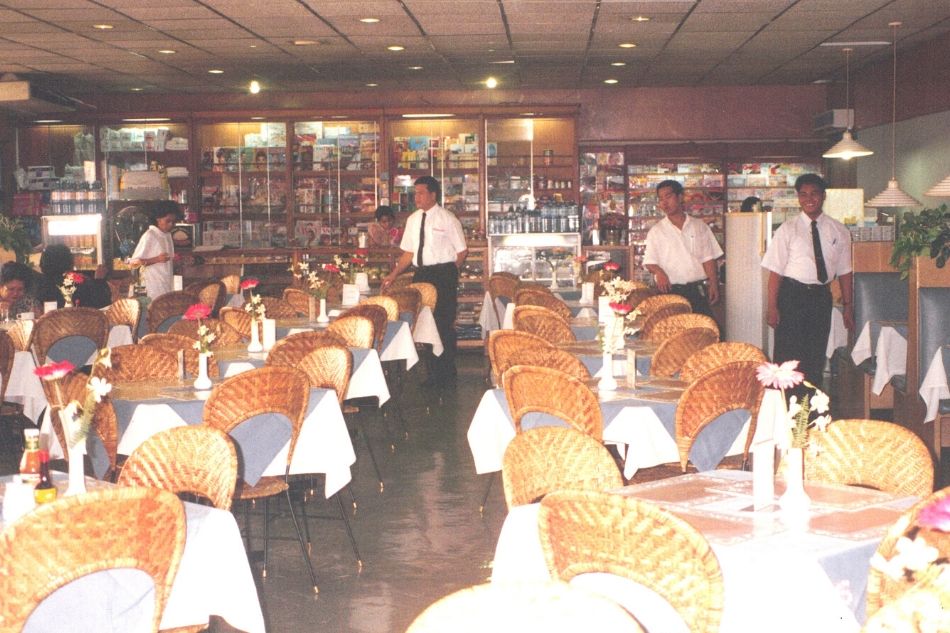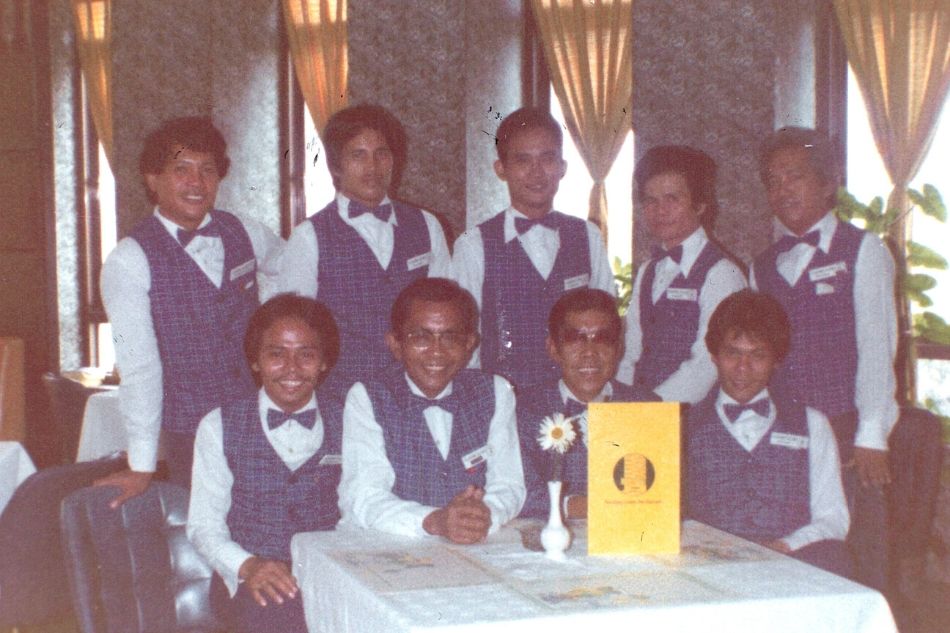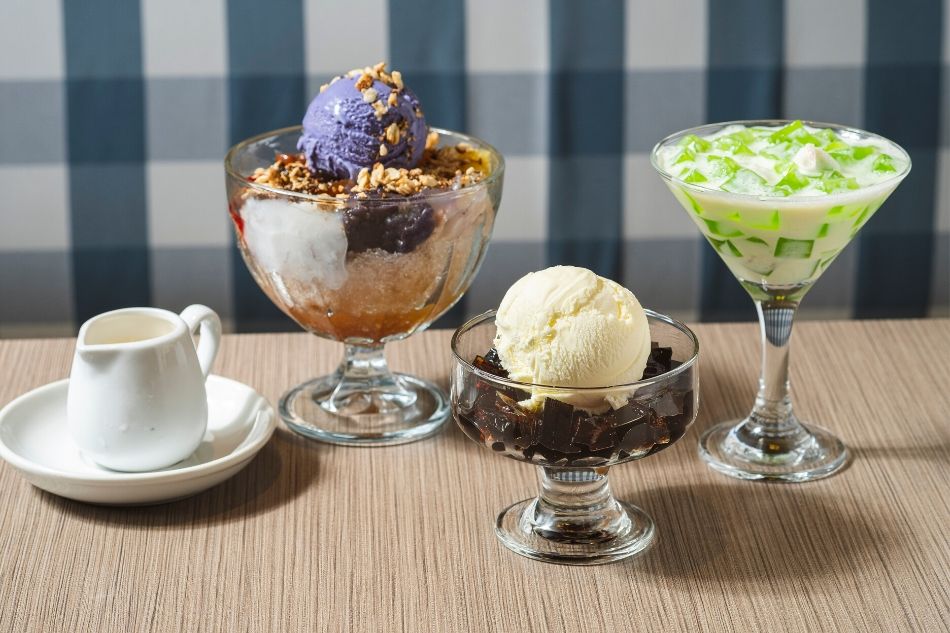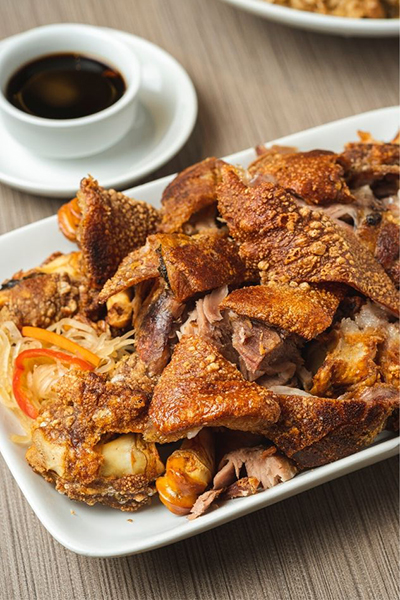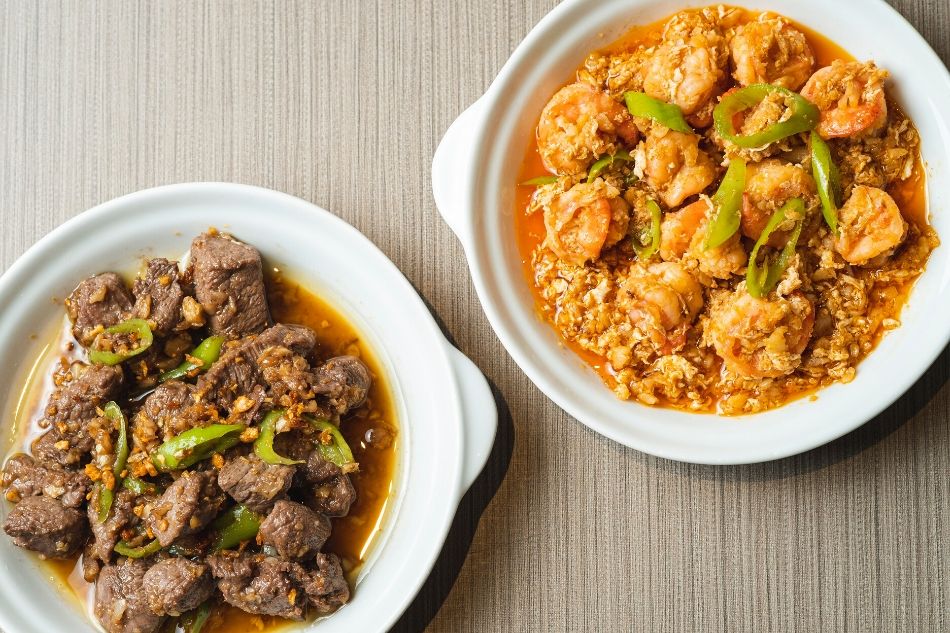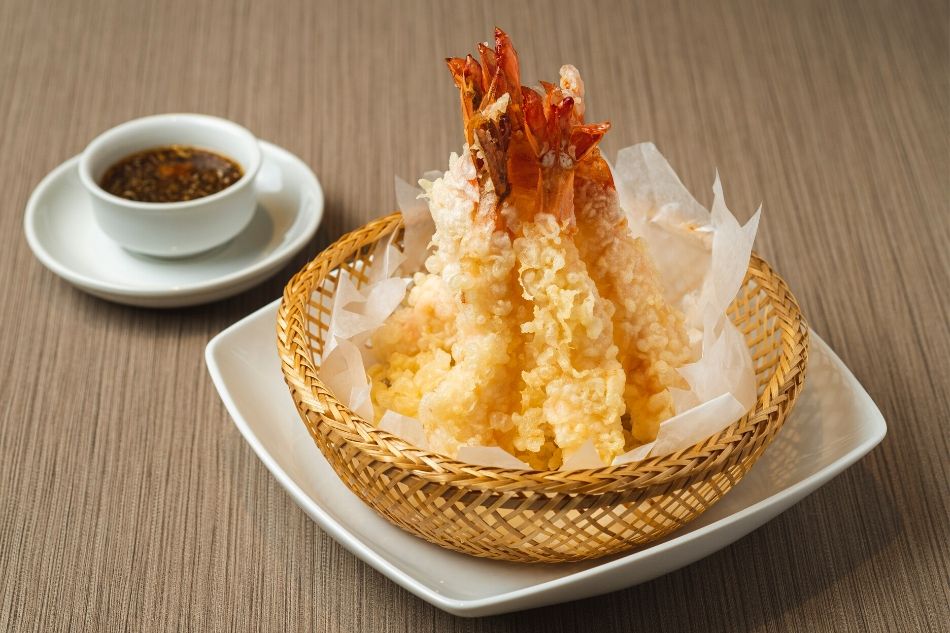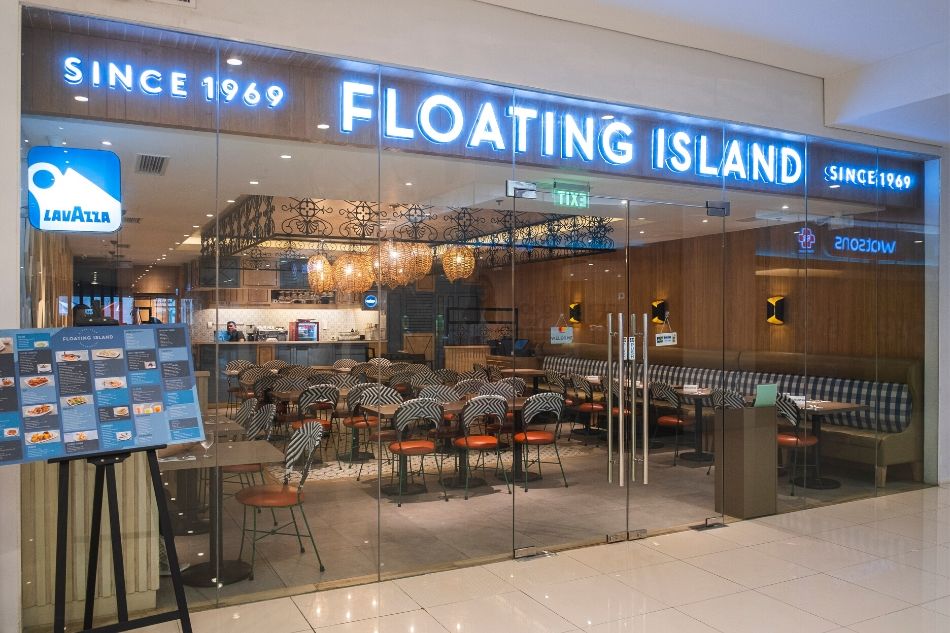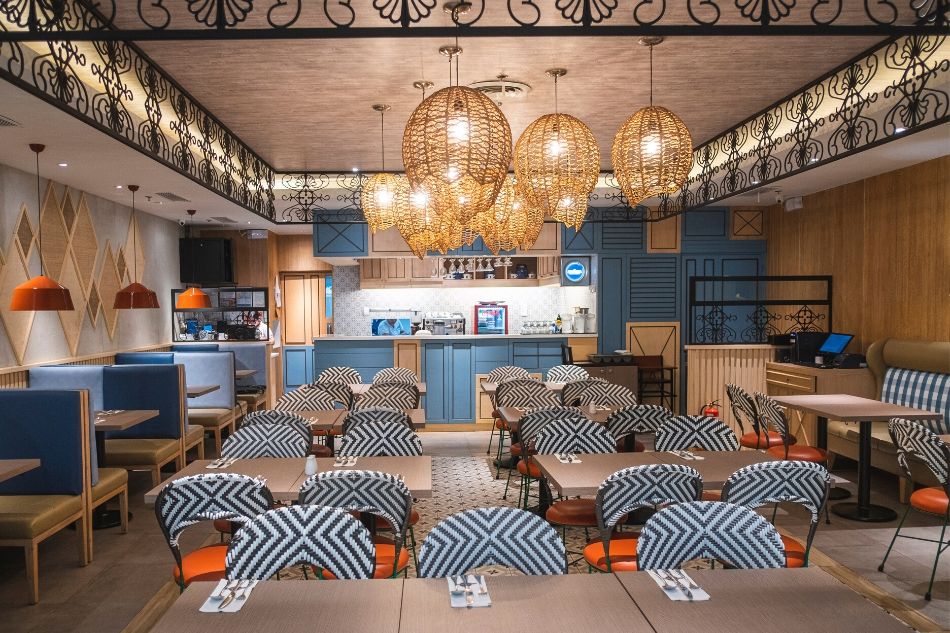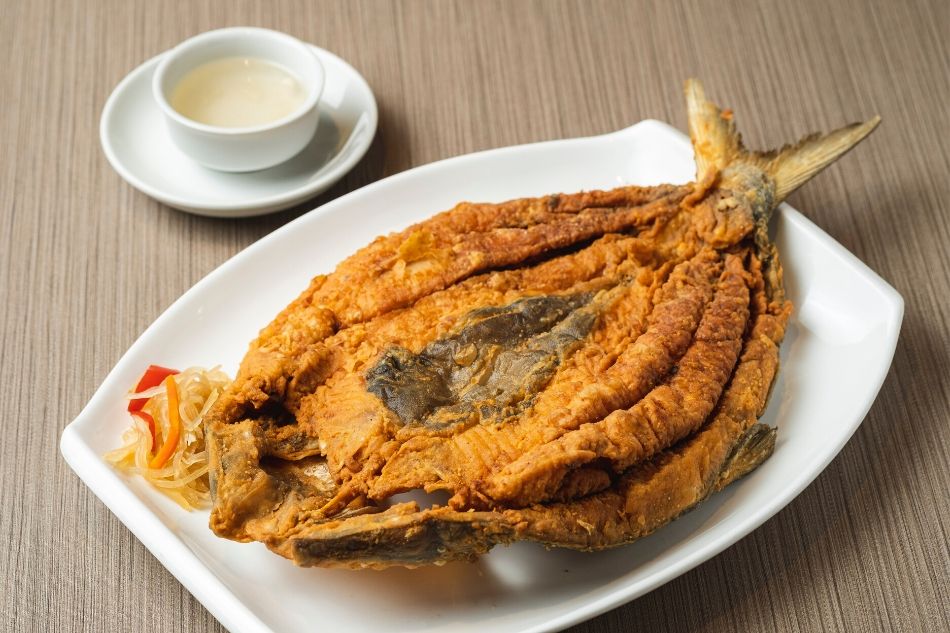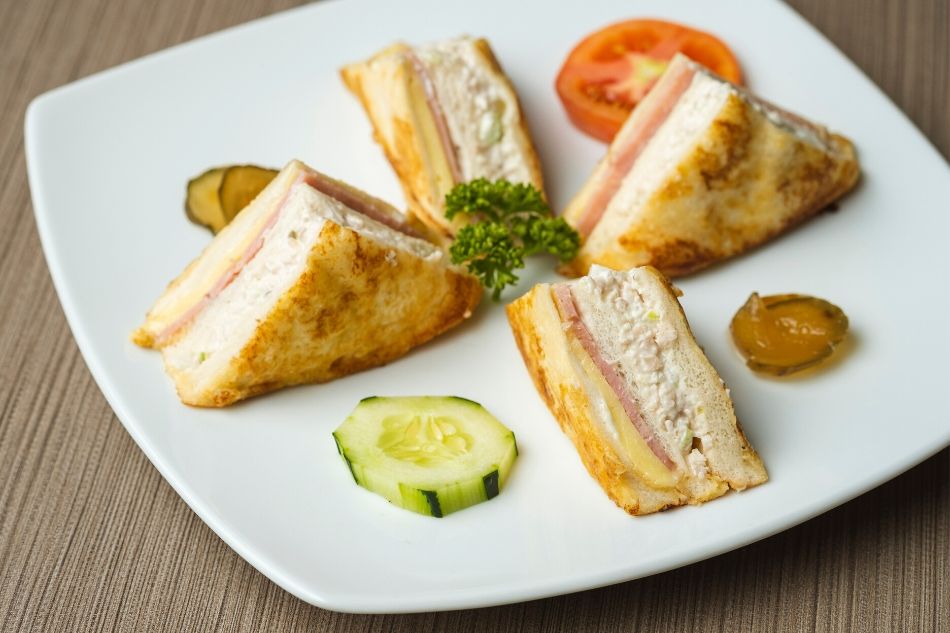There’s seriously good crispy pata and pancit at this 50-year-old restaurant inside Makati Med
ADVERTISEMENT

Welcome, Kapamilya! We use cookies to improve your browsing experience. Continuing to use this site means you agree to our use of cookies. Tell me more!
There’s seriously good crispy pata and pancit at this 50-year-old restaurant inside Makati Med
Maricris B. Encarnacion
Published Feb 21, 2020 12:45 PM PHT
The Makati Medical Center (MMC) opened its doors on May 31, 1969, as one of Manila’s premiere medical centers equipped with world class facilities. In December of the same year, Floating Island restaurant opened at the second floor of the hospital. It was meant to serve as the main dining area for doctors, medical personnel, family members, and friends of patients, and other visitors to MMC. It was founded by Vince Revilla, who ran it for decades, together with his brother Armando Goyena. To the few that may still remember, yes, Goyena is THE actor and matinee idol whose star shone in the 1950s. He later became known as the father of Maritess and Tina Revilla, both popular movie and TV stars in the 1970s. But I digress.
The Makati Medical Center (MMC) opened its doors on May 31, 1969, as one of Manila’s premiere medical centers equipped with world class facilities. In December of the same year, Floating Island restaurant opened at the second floor of the hospital. It was meant to serve as the main dining area for doctors, medical personnel, family members, and friends of patients, and other visitors to MMC. It was founded by Vince Revilla, who ran it for decades, together with his brother Armando Goyena. To the few that may still remember, yes, Goyena is THE actor and matinee idol whose star shone in the 1950s. He later became known as the father of Maritess and Tina Revilla, both popular movie and TV stars in the 1970s. But I digress.
You may also like:
You may also like:
- The search for the perfect paella
- Sourdough, wine & osso bucco: We found a hidden touch of Europe in the heart of Tomas Morato
- To truly appreciate paella in Valencia, one must witness its making in a farmhouse
- Cauli rice 'paella' with bone marrow is a hit in this new Spanish resto but its not on the menu
- The search for the perfect paella
- Sourdough, wine & osso bucco: We found a hidden touch of Europe in the heart of Tomas Morato
- To truly appreciate paella in Valencia, one must witness its making in a farmhouse
- Cauli rice 'paella' with bone marrow is a hit in this new Spanish resto but its not on the menu
It has been 50 years since Floating Island first opened. Its history, unlike that of other restaurants that have been part of many Filipinos’ lives, is filled with memories, not all of them happy. Alex Revilla, second generation owner who now runs the restaurant, says, “The only time a patient and the family are happy at the hospital is when it is the birth of a baby. Most of the time, it is stressful and even sad. Our food offers comfort.”
It has been 50 years since Floating Island first opened. Its history, unlike that of other restaurants that have been part of many Filipinos’ lives, is filled with memories, not all of them happy. Alex Revilla, second generation owner who now runs the restaurant, says, “The only time a patient and the family are happy at the hospital is when it is the birth of a baby. Most of the time, it is stressful and even sad. Our food offers comfort.”
When the older Revilla opened the restaurant half a century ago, he had The Bronze Pot at Regina Building and Botica Boie Soda Fountain as his credentials. He was a corporate man, but he wanted to own a business and he wanted it to be a restaurant. The opportunity presented itself and from the way the story is told, everything just fell into place.
When the older Revilla opened the restaurant half a century ago, he had The Bronze Pot at Regina Building and Botica Boie Soda Fountain as his credentials. He was a corporate man, but he wanted to own a business and he wanted it to be a restaurant. The opportunity presented itself and from the way the story is told, everything just fell into place.
Floating Island had a cook for 31 years, Mang Pepe. In 1969, he was a security guard in an establishment that had just closed. Revilla asked him, “Why are you guarding a business that is gone?” Before he could answer, he was asked, “Do you know how to cook?” Mang Pepe answered in the affirmative and Revilla said, “Then come and cook for me!” And he did follow.
Floating Island had a cook for 31 years, Mang Pepe. In 1969, he was a security guard in an establishment that had just closed. Revilla asked him, “Why are you guarding a business that is gone?” Before he could answer, he was asked, “Do you know how to cook?” Mang Pepe answered in the affirmative and Revilla said, “Then come and cook for me!” And he did follow.
ADVERTISEMENT
Revilla literally plucked him from the street; a tale of simpler times, when trust, rather than suspicion, was more commonplace. Now retired, he was one of the restaurant’s longest serving employees, along with accountant-turned-manager Evelyn Bautista who served 37 years and cook Florentino “Tatang” Iniego who stayed for 34 years.
Revilla literally plucked him from the street; a tale of simpler times, when trust, rather than suspicion, was more commonplace. Now retired, he was one of the restaurant’s longest serving employees, along with accountant-turned-manager Evelyn Bautista who served 37 years and cook Florentino “Tatang” Iniego who stayed for 34 years.
Alex Revilla relates that planning the restaurant’s menu at the onset was just something that had been put together without much thought or concept. It was borne out of family recipes, with some dishes coming from what the cooks knew how to cook, as well as what dishes were popular at the time. The menu had to provide comfort, so it was largely Filipino, and it needed to feel like a home-cooked meal. To many doctors and medical personnel who spent long days at the hospital, it was their kitchen and dining room away from home.
Alex Revilla relates that planning the restaurant’s menu at the onset was just something that had been put together without much thought or concept. It was borne out of family recipes, with some dishes coming from what the cooks knew how to cook, as well as what dishes were popular at the time. The menu had to provide comfort, so it was largely Filipino, and it needed to feel like a home-cooked meal. To many doctors and medical personnel who spent long days at the hospital, it was their kitchen and dining room away from home.
Except for the addition of a few dishes, not much has changed in 50 years. There have been attempts to retire some items and replace them with recipes that are more in tune with the times, but somehow, someone comes along and looks for a dish they had decades ago, and back it goes into the menu. Revilla tells us a story of one customer who wanted her Hawaiian Porkchop, an item that was no longer on the menu. She claimed that she had it when she gave birth 30 years ago and she was expecting it to still be there. “Well,” Alex said with a grin, “it’s a porkchop with a slice of pineapple on top so we obliged.”
Except for the addition of a few dishes, not much has changed in 50 years. There have been attempts to retire some items and replace them with recipes that are more in tune with the times, but somehow, someone comes along and looks for a dish they had decades ago, and back it goes into the menu. Revilla tells us a story of one customer who wanted her Hawaiian Porkchop, an item that was no longer on the menu. She claimed that she had it when she gave birth 30 years ago and she was expecting it to still be there. “Well,” Alex said with a grin, “it’s a porkchop with a slice of pineapple on top so we obliged.”
Every time my mother was confined at MMC, she would insist that we order a Crispy Pata (fried ham hock) from Floating Island and have it delivered to her room straightaway. Her last few years were spent in and out of MMC. My mother, ever the quintessential hostess, was adamant about treating her visiting sisters for lunch. (She belonged to a family of nine girls and one boy, so she always had one or two calling on her daily.) She demanded that I take them to Floating Island, order their meal and pay, then hurry back to her room and eat with her. Whenever she would allow me to leave her room for a break, it was a quick 30 minutes of Lomi time at the restaurant. It warmed my belly as well as my soul. How it did that, I will never know.
Every time my mother was confined at MMC, she would insist that we order a Crispy Pata (fried ham hock) from Floating Island and have it delivered to her room straightaway. Her last few years were spent in and out of MMC. My mother, ever the quintessential hostess, was adamant about treating her visiting sisters for lunch. (She belonged to a family of nine girls and one boy, so she always had one or two calling on her daily.) She demanded that I take them to Floating Island, order their meal and pay, then hurry back to her room and eat with her. Whenever she would allow me to leave her room for a break, it was a quick 30 minutes of Lomi time at the restaurant. It warmed my belly as well as my soul. How it did that, I will never know.
There were attempts to expand the business. In 1997, the Revilla family established Saint’s Café at St. Luke’s Medical Center in Quezon City, operating it for 10 years. In 1999, they opened Annex Café at De Los Santos Medical Center, close to St. Luke’s, running it until 2001. Flooding was a perennial problem so when someone offered to buy the business, they were happy to hand it over. In July 2011, they took over Le Buffet at the defunct PAGCOR casino close to the airport.
There were attempts to expand the business. In 1997, the Revilla family established Saint’s Café at St. Luke’s Medical Center in Quezon City, operating it for 10 years. In 1999, they opened Annex Café at De Los Santos Medical Center, close to St. Luke’s, running it until 2001. Flooding was a perennial problem so when someone offered to buy the business, they were happy to hand it over. In July 2011, they took over Le Buffet at the defunct PAGCOR casino close to the airport.
ADVERTISEMENT
In 2018, they opened their first mall-based restaurant at Ayala Malls The 30th in Ortigas. The idea was to offer an abbreviated menu that featured only their best-selling dishes. It didn’t work. Many of their customers were MMC regulars, so naturally, expectations ran high. The full menu is now being offered and one doctor at MMC no longer has her husband coming over to pick her up from work. It turns out, he would always eat at the restaurant while waiting for her to finish with her patients. With a branch close to home, he no longer has to go all the way to Makati for his Floating Island fix. And now, the good doctor gets to go home on her own.
In 2018, they opened their first mall-based restaurant at Ayala Malls The 30th in Ortigas. The idea was to offer an abbreviated menu that featured only their best-selling dishes. It didn’t work. Many of their customers were MMC regulars, so naturally, expectations ran high. The full menu is now being offered and one doctor at MMC no longer has her husband coming over to pick her up from work. It turns out, he would always eat at the restaurant while waiting for her to finish with her patients. With a branch close to home, he no longer has to go all the way to Makati for his Floating Island fix. And now, the good doctor gets to go home on her own.
The newest branch recently opened at Ayala North Exchange, a stone’s throw from MMC, absorbing the overflow crowd at the original location. The full menu is offered, many dishes nostalgic and a throwback to an era that the current generation does not recognize.
The newest branch recently opened at Ayala North Exchange, a stone’s throw from MMC, absorbing the overflow crowd at the original location. The full menu is offered, many dishes nostalgic and a throwback to an era that the current generation does not recognize.
I find the Pancit Maria to still be outstanding because, aside from the fact that the noodles are special and the dish isn’t glistening in fat, it holds many memories for me. Each bite brings back a moment.
I find the Pancit Maria to still be outstanding because, aside from the fact that the noodles are special and the dish isn’t glistening in fat, it holds many memories for me. Each bite brings back a moment.
They have kept the size and quality of the Dagupan Boneless Bangus, thick, meaty, and hefty so it serves more than 2 people. It is a dish that has endured for the last 50 years of the restaurant’s history.
They have kept the size and quality of the Dagupan Boneless Bangus, thick, meaty, and hefty so it serves more than 2 people. It is a dish that has endured for the last 50 years of the restaurant’s history.
A crowd favorite, the Adobo Rice is still a family-sized platter, satisfying enough to be a one-dish meal.
A crowd favorite, the Adobo Rice is still a family-sized platter, satisfying enough to be a one-dish meal.
ADVERTISEMENT
The Monte Carlo, a sandwich so ordinary yet so unique because it has been around for decades, may be unfamiliar to 20-year-olds. This throwback sandwich involves 2 layers of ham, cheese, and chicken salad in between white bread, dipped in egg and pan grilled. A single bite into the sandwich closes the generation gap, just like that.
The Monte Carlo, a sandwich so ordinary yet so unique because it has been around for decades, may be unfamiliar to 20-year-olds. This throwback sandwich involves 2 layers of ham, cheese, and chicken salad in between white bread, dipped in egg and pan grilled. A single bite into the sandwich closes the generation gap, just like that.
Alex Revilla takes his customers’ satisfaction very seriously. It is this commitment and dedication to the family’s brand that should see Floating Island through the next 50 years.
Alex Revilla takes his customers’ satisfaction very seriously. It is this commitment and dedication to the family’s brand that should see Floating Island through the next 50 years.
Floating Island branches at the Makati Medical Center, Amorsolo Street, Makati City; Ayala Malls The 30th, Meralco Avenue, Pasig City; and Ayala North Exchange, Ayala Avenue, Makati City
Photos by Justin de Jesus
ADVERTISEMENT
ADVERTISEMENT



